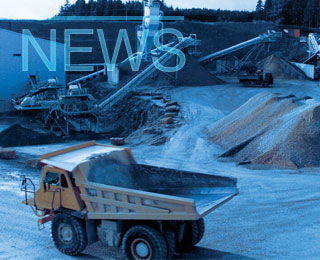The March ’07 quarter was good for cement makers reports the Indian press.
Large cement companies — ACC, Grasim, Gujarat Ambuja (now Ambuja Cement), Ultratech Cement and India Cement — built up on the revenue and profit growth momentum exhibited during the previous three quarters.
Combined net profit of top four cement makers more than doubled during the quarter compared to March ’06, while it was up 25 per cent YoY. That the growth was driven by better sales realisation was evident from the fact that cement shipments grew 3.1 per cent YoY.
The results came as a breath of fresh air for the market, which was plagued by bad news about the cement sector over the past two months. This led to the market bidding-up the prices of cement stocks. ET Cement index gained a little over 15 per cent during April ’07. Most major cement stocks reached their month-high in the run-up to the results announcement.
Grasim Industries was the fastest climber; it gained over 25 per cent from the lows reached in early April. This is too much price appreciation in too short a time. There has been no sudden development in the industry or the external
environment to warrant a re-rating of the sector. This could also be because the earlier correction was equally steep. Given the uncertainty about the industry’s ability to get a price hike, we advise retail investors to book profits and wait for a price correction to re-enter the market.
Cement prices seems to have peaked and going forward, it will be difficult for the industry to get a price hike without earning the Centre’s wrath. In the last quarter, for instance, while net sales realisation of the big five companies rose 35 per cent YoY, it was flat compared to December ’06 quarter figures.
A failure to get a further price hike will adversely affect the industry’s profit margins. Given high operational cost in producing and transporting cement, the sector’s profit growth is driven by price growth, rather than
volume growth. Faster volume growth depresses retail prices and eats into operating margins. The quarter also saw the industry incurring additional excise duty, post budget.
Gujarat Ambuja saw 45 per cent YoY jump in excise duty payments, against three per cent volume growth. India Cement paid 28 per cent more excise duty in the March ’07 quarter, against 2.5 per cent volume growth. Its impact will be felt even more in the June quarter. As of now, the industry seems to be sitting pretty. Operating margins rose over 600 bps to 45 per cent of net sales during Q4 FY07, against 39 per cent during year-ago period. Net profit margin rose 700 bps to 21 per cent of net sales in March ’07.
Despite a bulging bottomline, the industry showed good cost management skills. On a per tonne basis, operational expenditure grew 21 per cent YoY, slower than growth in net sales realisation. Expenditure growth would have been
even slower if not for a 34 per cent YoY growth in freight cost. Power & fuel cost grew 18 per cent YoY. The two account for a little over half the industry’s cost and a third of net sales.
The sector seems to be using the current buoyancy to reduce its interest burden. Aggregate interest outgo of the big four fell 29 per cent to Rs 59 crore – less than two per cent of net sales during March ’07. This is very low, given that cement is a capital intensive industry. This will insulate the industry’s financials from a hike in interest rates. A similar trend was visible in depreciation, which grew nine per cent YoY to Rs 201 crore.
This indicates lower-than-anticipated capex. Given the large capexannouncements by cement majors, we expect faster growth in interest and depreciation cost. This may not necessarily reduce net profit, since both these costs are tax deductible. In March ’07, the big four paid 26 per cent of their PBT as corporate income tax — almost double that in Q4 FY06. Going forward, we expect the sector to rely on volume growth to maintain momentum.
Companies may also test the government’s resolve by trying to hike prices by 5-10 per cent. But demand growth remains strong and big-ticket expansions are still a year away from commissioning. Among individual companies, we favour ACC and Grasim — the former for having a national footprint, and the latter for having a diversified product portfolio.
